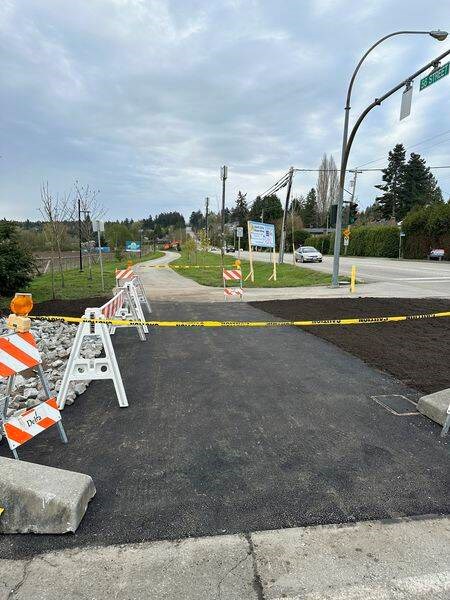Local cyclists have had a good couple of weeks, first, being recognized in law as vulnerable users of the road, with motorists ordered to give them space, and second, having the City of Delta extend the multi-use pathway at Sixth Avenue and 56th Street in Tsawwassen.
The latter gives safer passage for pedestrians and cyclists for crossing Sixth Avenue, the city said online. Another location at 34th Street and Brunswick was also repaired, improving infrastructure for cyclists.
Changes announced to the Motor Vehicle Act, which take effect June 3, requires motorists to give a metre of space when passing cyclists on roads with speed limits of 50 km an hour, and 1.5 metres of space when driving roads with a speed limit higher than 50 kmh.
However, cyclists in a separated and protected bike lane and on sidewalks, only need half a metre of space.
That change, and a few others, are significant steps towards safer roads, said Mike Koski, executive-director of the B.C. Cycling Coalition.
“Prioritizing vulnerable road users with concrete measures like safe-passing distances and a ‘vulnerable road user framework’ is an important milestone,” he said online.
And while there’s still lots to do, Laura Jane, HUB Cycling’s executive-director, said that her group is encouraged by the steps to “better define and protect vulnerable road users.”
The Motor Vehicle Act now recognizes cyclists, pedestrians and those on mobility scooters, electric kick scooters, motorcycles and those using an animal-driven vehicle as vulnerable road users.
The fine for not allowing enough space while passing is $368 and three demerit points.
An education and awareness program explaining the changes begins on June 3. B.C. is a leading area in North America for projecting cyclists and pedestrians, according to the release.
“These new regulations will keep people safer on our roads and encourage even more use of active transportation,” Rob Fleming, Minister of Transportation and Infrastructure, said in a statement. “It’s another step in modernizing our rules to keep up with new technologies that are changing how people are getting around.”
Other changes to the act create a new class of light e-bikes, which can be operated by people 14 and older as opposed to the previous 16-year-old minimum age.
The light e-bike class is characterized by a lower maximum speed of 25 km-h instead of 32 km-h for standard e-bikes. Their motors, meanwhile, must have a maximum power of 250 watts (half that of standard e-bikes), and instead of a throttle assist, can only operate while pedalling.
The new rules come as the province aims to wrap up a four-year pilot project to test electric scooters across several communities. Pilot regulations allow anyone 16 and older to operate an electric kick scooter without a licence or insurance.
While communities are allowed to set their own bylaws as part of the pilot, overriding provincial rules require scooter riders to use a designated cycling lane or stay as far right as “practicable” on roads with speed limits of 50 km/h or less.
On roads where the speed limit exceeds 50 km/h, electric kick scooters can only use a designated cycling lane.



